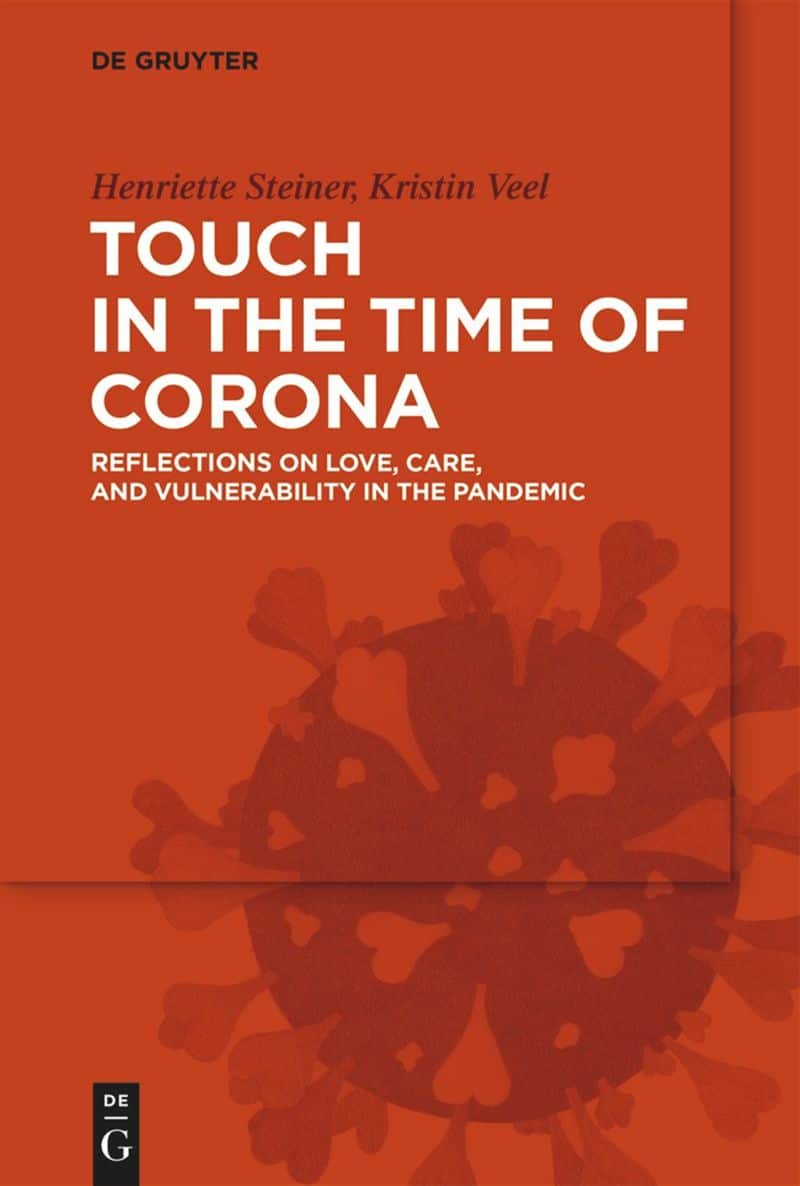How COVID-19 Made Us Rethink the Power of Touch
While the social implications of COVID-19 have touched us all, we have mostly been touching our screens. What happens to our relationships when caring becomes a matter of distance?
Sometime in 2020, we taught each other how to smize: smile with the eyes.
When we covered our lower faces with a fabric face mask, the simple act of smiling became impossible. Suddenly, we had to find new ways to politely greet a stranger on public transport, to warmly acknowledge a colleague on a busy day, or to express our sympathy to a mother comforting a crying child in the supermarket.
Left only with the eyes to guide us, we started looking for other emotional cues: a slight squint, or a reassuring blink. We learned to look at the creases and fine lines—how the corner of the eye turns slightly outward or downward and ends its journey just before the hairline.
In 2020, the coronavirus infection that was causing a global pandemic presented us with challenges and opportunities to touch and be touched—to care and be cared for. Using new cultural techniques, we had to learn how to physically distance ourselves from each other and the surrounding environment.
The pandemic has had wide social, political, economic, ecological, emotional, and epistemological effects. Due to the risk of infection, many people were forced to slow down or stop the activities that kept them economically afloat—and kept the capitalist economy going in Western societies.
And touch has been a primary vehicle for the spread of the disease. Holding hands, kissing, hugging, or standing close together puts us at risk of contaminating one another, rather than connecting us.
More Than Just Surface Contact
Touching and being touched is a double movement that binds entities together. Touch has the potential to alter the entities involved, changing the state of that with which they, or we, engage. It is not only about the interfacing of surfaces; it involves a whole, situated, moving body conditioned by geographical, intersectional structures and a particular emotional and psychological orientation.
“Touching and being touched is a double movement that binds entities together.”
Touch can result in tactile, kinesthetic, and emotional stimuli. People react differently to human touch compared with machine touch. In humans, touch can release the hormone oxytocin. In the brain, oxytocin is involved in social bonding, which is why it is also referred to as a bonding or love hormone.
The way in which we experience a touch, however, is conditioned by its physical aspects (its temperature, force, and velocity). Furthermore, touch is also conditioned by our previous experiences, and by the person who is touching us. Research has shown that if a stranger touches us on the skin of our arm—even if we cannot see the actual touch—we can detect the stranger’s emotion, be it anger, fear, disgust, love, gratitude, or sympathy.
Pandemic Reconfigurations
During the hard lockdowns of 2020, the pandemic confined billions of people to online interactions, making the greater part of work and social life digital. In the self-isolated comfort of our homes, we searched for intimacy in the digital realm. We met and shared our experiences on social media and in video conferencing rooms, finding ways to touch and be touched behind the screen. We handled our shopping online, held online work meetings, and stayed in close virtual contact with the world outside our own four walls.
When the virus started spreading in 2020, the social, economic, and health-related consequences of COVID-19 impacted people and communities in highly uneven ways. For (privileged) people in Western societies, most everyday activities went digital. While protecting us from the pandemic, digital technologies such as e-commerce, online dating, video calls, and online game forums for children who were out of school became part of a parallel, digital world that was more appealing than the physical world around us.
As the possibilities of touch, touching and being touched, both physically and affectively, were reconfigured by the pandemic, we developed a warlike metaphor to help us understand the virus: we were to eliminate an invisible enemy with medical weapons of mass destruction. Those of us not on the front line in the fight against COVID-19 waited at home for scientists’ vaccines – or any other measure – to end the pandemic.
“COVID-19 made it painfully visible that this unprecedented digital connectedness was available only to the privileged people who could afford to stay at home.”
During the first hard lockdowns, our ability to connect with others without physically touching grew to unprecedented levels. One might argue that this was when the pandemic hit at a technological point. But COVID-19 also made it painfully visible that this unprecedented digital connectedness was available only to the privileged people who could afford to stay at home. Doctors, nurses, cleaners, and maintenance workers found themselves having to deal with the virus and its potentiality through most of their waking hours.
New Dimensions of Touch
When the risk of infection forced us to limit physical touch, many of us replaced human presence and touch with mediated conversations and collaborations. We became more dependent on digital technologies, which the pandemic pushed us to experience in new, tactile, and haptic ways. We found ways to touch and be touched, despite our isolation and the reduction in our contact with other people.
The touch of a mask’s fabric on the skin offers a vehicle to explore different dimensions of touching and being touched, both physically and affectively. The ways in which COVID-19 has reconfigured our relationship with ourselves, with things, and with places will continue to affect us and our surroundings. The pandemic changed more than our recognition of a smile: it taught us how to care from afar, give a digital hug, and find comfort in a touch on a screen.
*We thank Mathilde Elisabeth Merolli for her assistance with writing this blogpost.
Learn more in this related title from De Gruyter
[Title image by Zoe via Unsplash]
